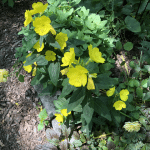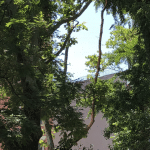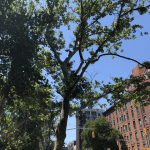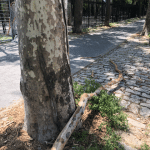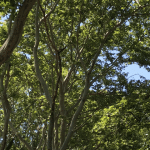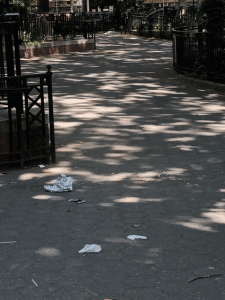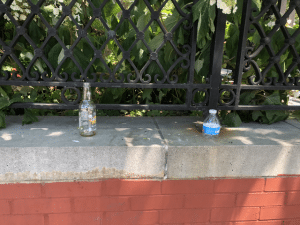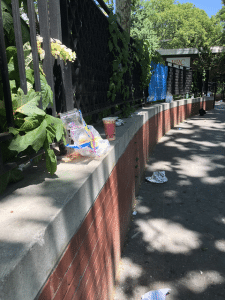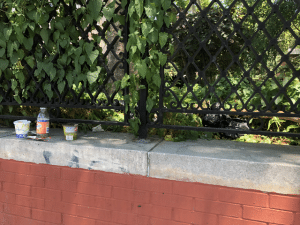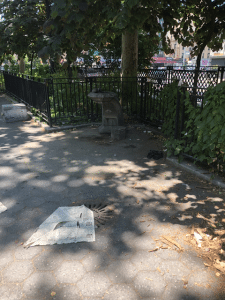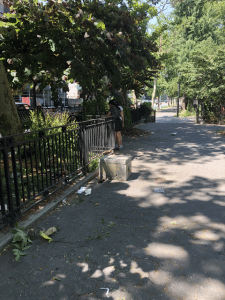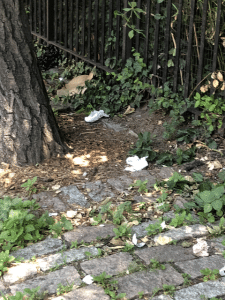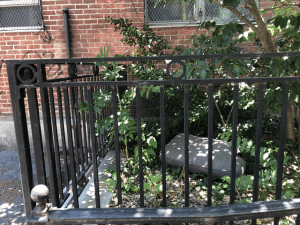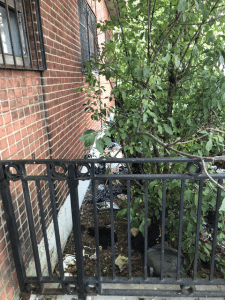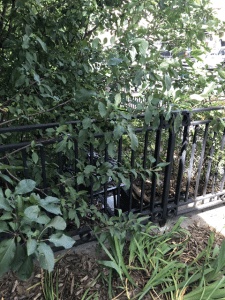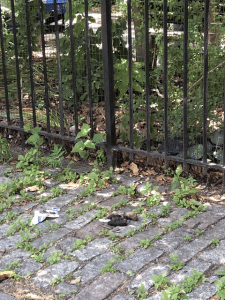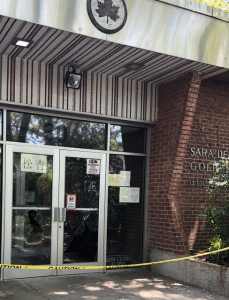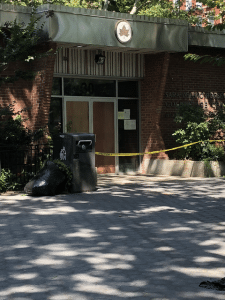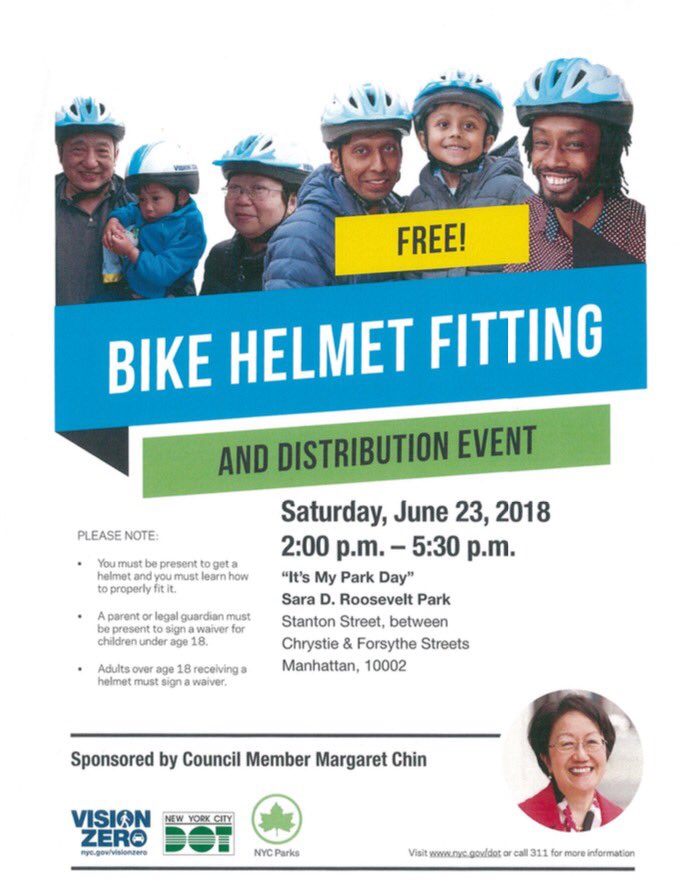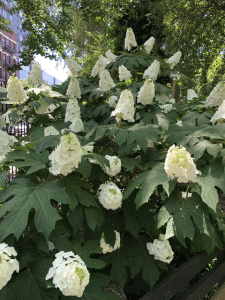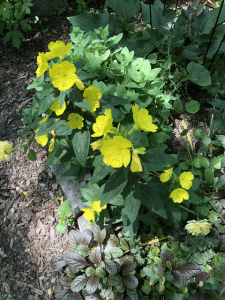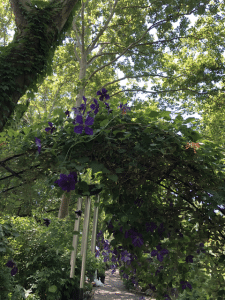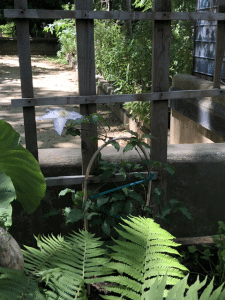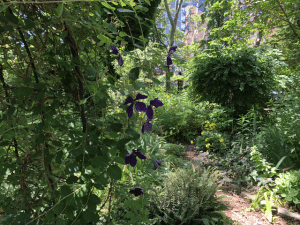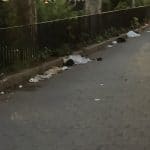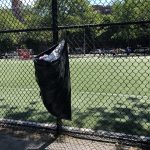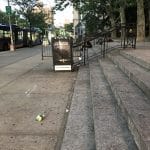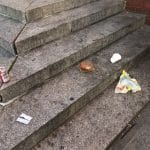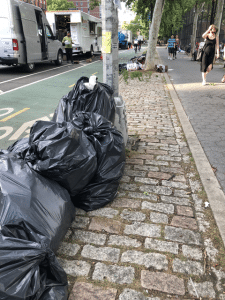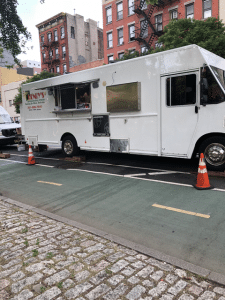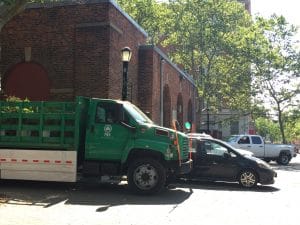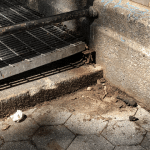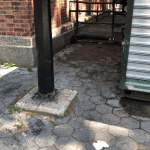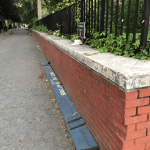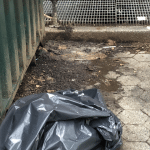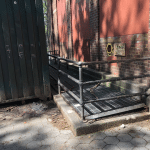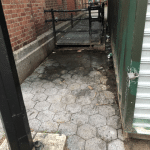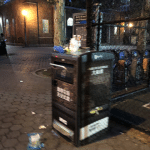The Lo-Down: (first published in 2016 but still relevant):
“In a time of diminishing resources we must rethink how we allocate the ones we have. Community resources such as the numerous park buildings that dot the Lower East Side must be returned to active neighborhood use. We can no longer afford to have these buildings used for storage or sit neglected as empty space. The Stanton Street building in Sara D. Roosevelt (SDR) Park was once a bustling youth center. We need it back.
Affordable spaces are vanishing. With the ongoing collapse of structural support for vulnerable youth, elders, and working people, the need for access to publicly owned sites in densely populated, low-income neighborhoods is clear. And, as Hurricane Sandy made evident, we are in desperate need of hubs from which to catalyze self-help efforts to take on climate change locally.
There is an urgent need for gathering-places to plan our common future and to share skills. We need dedicated sites where we can tackle current crises and strategize to prevent or ameliorate those that loom. Three community issues in particular stand out: the ongoing youth-on-youth violence, the disintegration of funding streams for low-income neighbors, and the need to practice “going green.” Could we marry these in one building?
We recently lost a bottle redemption center nearby. This has had an immediate impact on those who live on the economic margins. The working poor rely on this supplemental income to stay in their homes. Could we share these buildings for recycling? We get “greener,” people get concrete help.
We have young people who need to know they matter. Our teenagers need to take charge of their future. But in order to do that they need skills and hope- they already have the energy and the ability. Bike-share programs are coming to the LES in the spring along with jobs to maintain them. Can we use this site to train our youth to fix a bike?
Could they learn to build solar panels and install them? Figure out how to build a wind generator? Can math and science serve a present purpose- not just in a textbook? Can information be used to excite the minds of our youth who may see no way forward towards a life that has relevance?
In our community we have talented volunteers who are eager to share knowledge to help us create a better environment -right now. They can teach us how to ride a bike. Or fix it. Or fix your grandmother’s shopping cart. Or teach us how to grow vegetables or flowers or fruits. Or how to compost. Or knit a sweater or sew a shirt. Or read or write. Or make a poem. Or organize the tenants in your building. We have many skills here: across class, race, age, schooling and gender. Could we use park buildings as central clearinghouses for taking concrete actions? Could we site technological think tanks here that point us towards a sustainable future? Could parks become models of sustainability?
What if we show youth some options? Insist on possibility despite our own exhaustion and discouragement? Stop telling them what THEY should do and instead show them what WE will do? What if we make a decision to stand on behalf of our children and our planet? Apply sustainability to sustaining our environment AND our youth?
Can we use our combined talents and power to shift our focus to solving crisis and not waste time finding fault, blaming others, doing nothing or talking endlessly?
It has been done. The Delancey SDR Park building was reopened in the 1980’s because this community fought for it. The building had sat empty, with no park funding. It now houses the BRC’s senior nutrition center. M’Finda Kalunga Garden, Stanton CSA, SDR Coalition, Community Board 3, Parks Department and others meet there. It is a beehive of activity. Generous hard-working staff and seniors have created an oasis of caring in our park – on a shoestring budget. This building bristles with joy and purpose.
We can do it again.
We have active interest in re-energizing park buildings from our Council Member, Community Board 3, the neighbors, local funders and not-for-profits. We have ongoing efforts to survey the buildings and the neighbors as well as offers to maintain and program the building. We have interest expressed from the Parks Department.
Just as the erosion of our environment must be challenged now (because hurricanes and physics won’t wait) so we must pivot to take on the other urgent needs of this neighborhood. All our public resources must be fully used.
I’ve heard reasons why we can’t reopen the building. But for any of us who’ve witnessed the disaster of Sandy or the disaster of children dying on our streets- none of the reasons hold. I can’t imagine losing my child to such tragic foolishness but I also cannot imagine sitting by while OUR tragic foolishness says there is nothing we can do about it.”
Current conditions in the area around the Stanton Building “Storehouse”
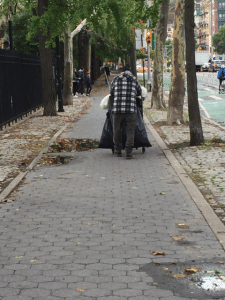 From Politico:
From Politico:
